"Cherishing Little Steps - A Haven for Baby and Family Journeys"
Choosing Convertible Car Seats
Imagine the wind in your hair as you cruise down the open road, your little one safely buckled in the back seat. Choosing the right convertible car seat is a crucial decision for any parent.
With so many options available, it can be overwhelming to navigate through the sea of choices. But fear not! We are here to guide you on this important journey.
In this guide, we will walk you through the key factors to consider when choosing a convertible car seat. From size considerations and weight limits to installation methods and safety features, we will cover it all.
So, let’s dive in and find the perfect convertible car seat that will keep your little one secure and comfortable on all your adventures.
Key Takeaways
- Consider the size and installation requirements of the car seat, ensuring it fits well in your vehicle without compromising safety features.
- Choose a car seat that accommodates your child’s weight and height as they grow, and check for height restrictions to ensure proper head support.
- Keep your child rear-facing for as long as possible, as rear-facing seats distribute crash force evenly and provide better head and neck support.
- Look for car seats with top-notch safety features, such as impact protection and easy-to-use LATCH connectors, to protect your child in case of an accident.
Size Considerations
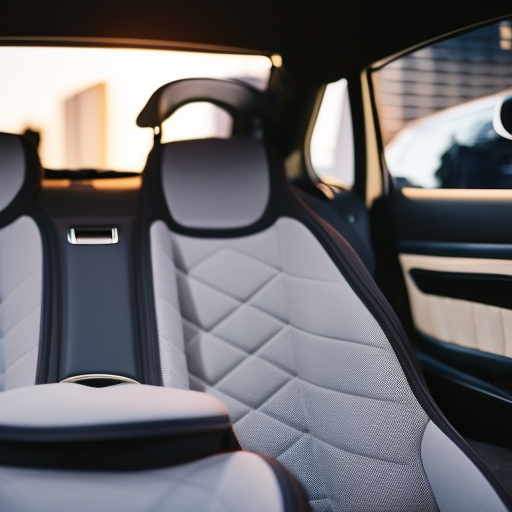
When choosing a convertible car seat, consider the size of your child and the available space in your vehicle. Size considerations are crucial to ensure a safe and comfortable ride for your little one. Look for a compact design that can fit well in your vehicle without compromising on safety features.
A compact design is especially important if you have a small car or need to fit multiple car seats in your vehicle. Look for car seats that are specifically designed to take up less space, allowing you to have more room for other passengers or belongings. These compact car seats often come with features that allow for easy installation and adjustment, making it hassle-free to secure your child.
Additionally, if you frequently travel or go on road trips, consider travel-friendly options. Some convertible car seats come with features such as lightweight construction or the ability to easily fold and carry. These features make it convenient for you to take the car seat with you on your travels, ensuring that your child is safe and comfortable no matter where you go.
Weight Limits
Are you wondering what weight limits to consider when choosing a convertible car seat for your child? It’s important to find a car seat that can accommodate your child’s weight and height as they grow. To help you make an informed decision, here is a table outlining the weight requirements and height restrictions for common convertible car seats:
| Car Seat Model | Weight Range | Height Limit |
|---|---|---|
| Model A | 5-40 lbs | Up to 40" |
| Model B | 5-65 lbs | Up to 49" |
| Model C | 5-100 lbs | Up to 52" |
| Model D | 5-40 lbs | Up to 40" |
| Model E | 5-65 lbs | Up to 49" |
When considering weight limits, it’s important to choose a car seat that allows for your child’s growth over time. Some car seats have a lower weight range, making them suitable for infants, while others have a higher weight limit, accommodating toddlers and even older children. Height restrictions are also crucial, as you want to ensure that your child’s head is properly supported by the car seat’s backrest.
Installation Methods
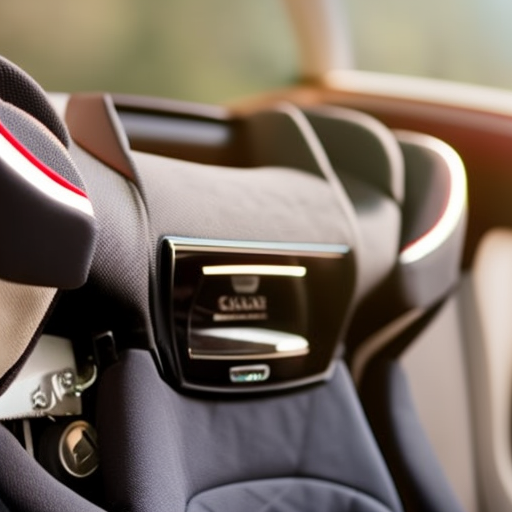
To properly install your convertible car seat, you’ll need to familiarize yourself with the different installation methods. There are two main methods for installing a convertible car seat: the LATCH system installation and the seat belt installation.
The LATCH system installation stands for Lower Anchors and Tethers for Children. This method involves attaching the car seat to the vehicle using special anchors and tethers that are built into the car. The advantage of using the LATCH system is that it provides a secure and easy installation. However, it’s important to check the weight limits specified by both the car seat and the vehicle manufacturer to ensure proper installation.
The seat belt installation method involves using the vehicle’s seat belt to secure the car seat. This method is commonly used when the LATCH system isn’t available or when the weight limits for the LATCH system have been exceeded. When installing with the seat belt, it’s crucial to follow the car seat manufacturer’s instructions carefully to ensure a safe and secure installation.
No matter which installation method you choose, it’s essential to read the car seat’s manual thoroughly and follow the instructions provided. This will ensure that you install the car seat correctly and provide maximum safety for your child.
Rear-Facing or Forward-Facing
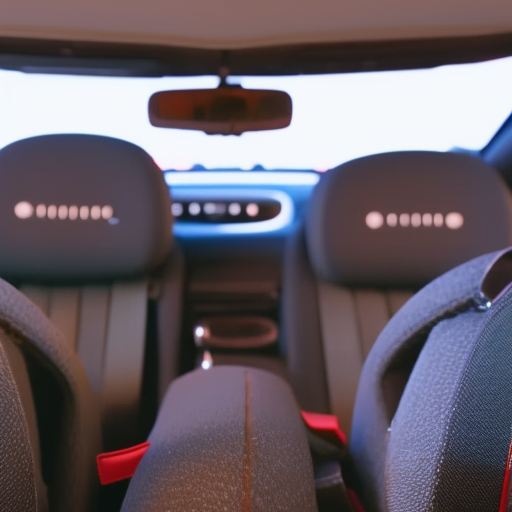
If you’re deciding between rear-facing or forward-facing, consider the age and weight requirements of your child. When it comes to convertible car seats, both options have their own benefits.
Rear-facing seats provide safety benefits that are crucial for young children. In the event of a crash, the force is distributed evenly across the child’s entire body, reducing the risk of serious injuries. Research has shown that rear-facing seats are particularly effective in protecting the head, neck, and spine.
Additionally, rear-facing seats provide developmental advantages. They support the natural curvature of the spine and provide better support for the head and neck, which are still developing in infants and young children. This position also helps to reduce the risk of breathing problems and allows for better oxygen intake.
As your child grows, you can transition to a forward-facing seat, but it’s recommended to keep them rear-facing for as long as possible, following the weight and height limits specified by the car seat manufacturer.
Safety Features

When choosing a convertible car seat, it’s important to consider the safety features that will protect your child. One crucial safety feature to look for is impact protection. This refers to the seat’s ability to absorb and distribute the force of a crash, minimizing the impact on your child’s body. Look for car seats that have energy-absorbing foam or padding in the headrest and side wings, as these areas are most vulnerable in a collision.
Another important safety feature to consider is the LATCH system. LATCH stands for Lower Anchors and Tethers for Children and is a standardized system that allows you to securely attach the car seat to your vehicle. It eliminates the need for seat belts and ensures a tight and secure installation. The LATCH system typically consists of lower anchors in the vehicle and corresponding attachments on the car seat.
When choosing a convertible car seat, make sure it has easy-to-use LATCH connectors that can be properly tightened to provide a secure installation.
These safety features are crucial in protecting your child in the event of a car accident, so be sure to thoroughly research and choose a car seat that offers the best impact protection and utilizes the LATCH system effectively.
Comfort Features
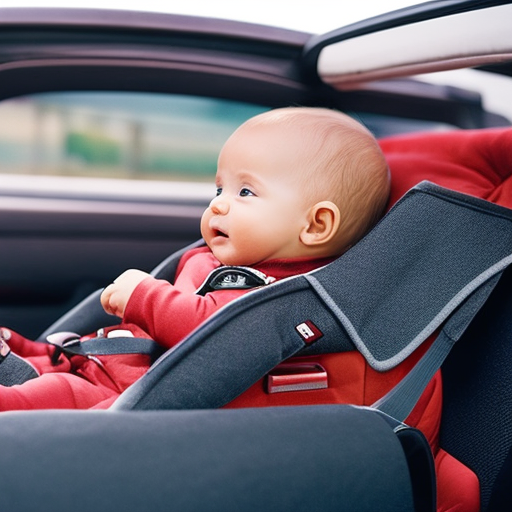
Consider your child’s comfort when selecting a convertible car seat, ensuring they’ve a comfortable ride during your travels. Here are four comfort features to look for in a convertible car seat:
-
Adjustable headrests: Look for a seat with adjustable headrests that can be easily customized to your child’s height. This feature allows you to provide proper support for your child’s head and neck, ensuring a comfortable position throughout the journey.
-
Padded harness straps: Opt for a car seat with padded harness straps. These straps offer additional comfort by preventing the straps from digging into your child’s skin during longer trips. The padding also helps to distribute the force of impact more evenly in the event of a collision.
-
Recline positions: Consider a convertible car seat that offers multiple recline positions. This feature allows your child to sit back and relax during the ride, especially during longer trips. Being able to adjust the seat’s angle also helps with your child’s comfort when they fall asleep in the car.
-
Soft and breathable fabrics: Look for a car seat with soft and breathable fabrics. These materials provide a cozy and comfortable environment for your child, reducing the chances of discomfort caused by heat and sweat buildup.
Ease of Use
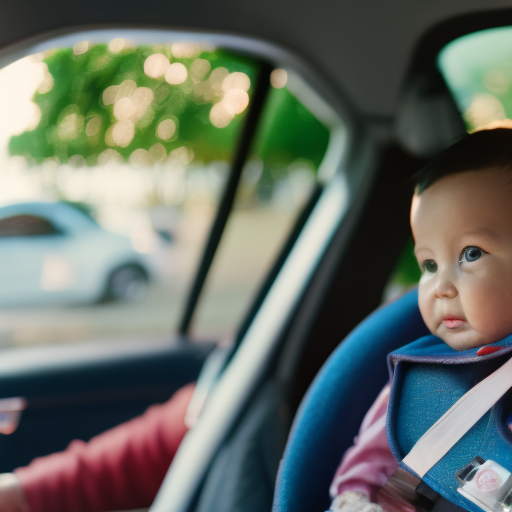
Look for user-friendly features in a convertible car seat that make it easy for you to install and adjust the seat as needed. One important feature to consider is adjustable straps. Having the ability to adjust the straps allows you to customize the fit of the seat to your child’s size and comfort. This is especially important as your child grows and their needs change. Look for seats with easily accessible straps that can be adjusted with minimal effort.
Another feature to consider is shoulder padding. This provides extra comfort for your child during long car rides. Look for seats that have well-padded shoulder straps to prevent discomfort and irritation. The shoulder padding should be soft and supportive, providing a snug and secure fit.
In addition to adjustable straps and shoulder padding, look for other user-friendly features that will make your life easier. This could include features like a one-hand harness adjustment, easy-to-read installation instructions, and clear labeling for proper installation.
Cleaning and Maintenance
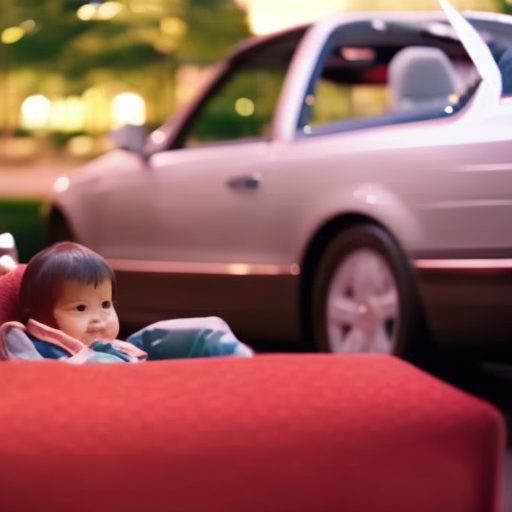
Ensure the longevity and cleanliness of your convertible car seat by maintaining regular cleaning and maintenance practices. Here are four essential tips to keep your car seat in pristine condition:
-
Follow manufacturer’s instructions: Each convertible car seat comes with specific cleaning guidelines. It’s crucial to read and follow these instructions to avoid damaging the seat or compromising its safety features. Different brands may have different cleaning methods, so make sure to familiarize yourself with the recommendations provided.
-
Spot clean stains promptly: Accidents happen, and spills or messes can occur in the car seat. To prevent stains from setting in, address them promptly. Use a mild detergent or baby-safe cleaning solution and a soft cloth to gently blot the affected area. Avoid using harsh chemicals or abrasive materials that can damage the fabric or padding.
-
Invest in stain-resistant materials: Look for convertible car seats that feature stain-resistant fabrics or materials. These seats are designed to repel liquids and prevent stains from penetrating the surface. Stain-resistant seats make cleaning easier and help maintain the seat’s appearance over time.
-
Regularly vacuum and wipe down the seat: Dust, crumbs, and other debris can accumulate on the car seat over time. To keep it clean, regularly vacuum the seat to remove loose dirt particles. Additionally, wipe down the seat with a damp cloth to remove any residue or spills. This simple routine maintenance will help keep your seat looking and smelling fresh.
Price Range

To make an informed decision when choosing a convertible car seat, it is important to understand the price range options available. When it comes to affordability, there are a variety of budget-friendly options to choose from. To help you navigate through the different price ranges, here is a breakdown of the options:
| Price Range | Features | Examples |
|---|---|---|
| Under $100 | Basic features, limited padding | Graco Contender 65, Evenflo Tribute LX |
| $100 – $200 | Enhanced safety features, additional padding | Safety 1st Grow and Go, Chicco NextFit |
| $200 and above | Premium features, extended rear-facing capabilities | Britax Boulevard ClickTight, Clek Foonf |
In the under $100 range, you can find convertible car seats that provide the basic essentials for safety and comfort. Moving up to the $100 – $200 range, you’ll find seats with enhanced safety features and added padding for a more comfortable ride. If you’re willing to invest $200 or more, you’ll have access to premium features like extended rear-facing capabilities and additional safety technologies.
Brand Reputation

When considering brand reputation, it’s important to research and evaluate the track record of convertible car seat manufacturers. Here are four key factors to consider when evaluating a brand’s reputation:
-
Safety certifications: Look for car seat brands that prioritize safety and have received certifications from recognized organizations such as the National Highway Traffic Safety Administration (NHTSA) or the Juvenile Products Manufacturers Association (JPMA). These certifications ensure that the car seat meets the highest safety standards.
-
Durability and longevity: A reputable brand will design car seats that are built to last. Look for seats made from high-quality materials that can withstand wear and tear over time. Consider the brand’s reputation for durability and longevity to ensure that your investment will serve your child for years to come.
-
Customer reviews and ratings: Read reviews from other parents to get a sense of their experiences with a particular brand. Look for brands with positive feedback and high ratings for their car seats. This can give you valuable insights into the brand’s reputation for quality and customer satisfaction.
-
Recall history: Check if the brand has had any recalls in the past. While recalls can happen to any manufacturer, a high number of recalls may indicate potential issues with the brand’s products. It’s important to choose a brand that takes prompt action to address and resolve any safety concerns.
Crash Test Ratings
Check crash test ratings to determine how well a convertible car seat performs in simulated collision scenarios. When it comes to choosing a car seat for your child, crash test ratings are of utmost importance. These ratings provide valuable information about the safety and performance of the car seat in the event of a crash. Understanding the significance of crash test results for convertible car seats will help you make an informed decision and ensure the safety of your child.
Crash test ratings are based on rigorous testing conducted by independent organizations, such as the National Highway Traffic Safety Administration (NHTSA) and the Insurance Institute for Highway Safety (IIHS). These organizations subject car seats to various crash scenarios, measuring factors such as impact force, head excursion, and potential injury risks. The results are then used to assign ratings, usually on a scale of one to five stars, indicating how well the car seat performed in protecting the child during the crash.
When selecting a convertible car seat, it’s crucial to prioritize crash test ratings. A car seat with a higher crash test rating demonstrates superior safety performance and provides better protection for your child. Remember, a car seat isn’t just a piece of equipment; it’s a lifeline in the event of an accident. So, take the time to research and compare crash test ratings before making your final decision. Your child’s safety should always be the top priority.
User Reviews and Recommendations
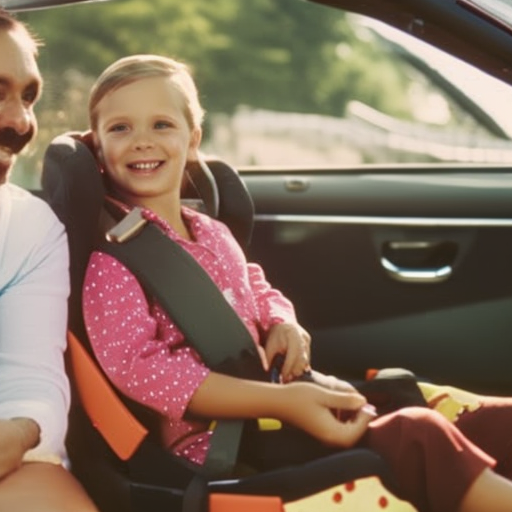
Consider reading user reviews and recommendations to gain valuable insights on the performance and satisfaction of convertible car seats.
While crash test ratings provide important information about the safety of a car seat, user reviews can give you a real-life perspective on how well a seat holds up over time and how easy it is to use.
Here are four key factors to consider when reading user reviews:
-
Longevity and durability: Look for reviews that mention the seat’s durability and how well it holds up over time. Users who’ve used the seat for a longer period can provide insights into its longevity and whether it withstands wear and tear.
-
Adjustability and customization: User reviews can shed light on how easy it is to adjust the car seat to fit different ages and sizes of children. Look for feedback on the ease of adjusting the straps, headrest, and recline positions to ensure a proper and comfortable fit for your child.
-
Installation: Pay attention to reviews that discuss the ease of installation. User experiences can help you determine whether the seat is straightforward to install and whether it securely and tightly fits in your vehicle.
-
Comfort and convenience: User reviews often mention the comfort level of the seat and the convenience of features such as cup holders, removable covers, or additional padding. Consider the feedback on comfort and convenience to ensure your child’s comfort during car rides.
Frequently Asked Questions
What Are the Recommended Age and Weight Ranges for Using a Convertible Car Seat?
The recommended age and weight ranges for using a convertible car seat vary, but generally, they are suitable for infants from birth to around 40 pounds and toddlers up to 65 pounds.
Are Convertible Car Seats Compatible With All Types of Vehicles, Including Smaller Cars or Suvs?
Are convertible car seats compatible with all types of vehicles? Absolutely! They are designed to fit in smaller cars or SUVs. With proper installation tips, you can enjoy the convenience and safety of a convertible car seat in any vehicle.
Can Convertible Car Seats Be Used in the Middle Seat of a Vehicle, or Are They Only Suitable for the Rear or Front Passenger Seats?
Convertible car seats can be used in the middle seat of a vehicle, but they are also suitable for the rear or front passenger seats. Each option has its advantages and disadvantages, so consider your specific needs and preferences before making a decision.
Are There Any Additional Accessories or Attachments That Can Be Used With a Convertible Car Seat for Added Convenience or Safety?
When considering convertible car seats, it’s important to know that there are additional accessories and attachments available to enhance convenience and safety. These can include things like cup holders, seat protectors, and extra padding for added comfort.
How Long Do Convertible Car Seats Typically Last Before They Need to Be Replaced?
Convertible car seats typically last 6-10 years before needing replacement. To ensure proper installation, follow the manufacturer’s instructions and consult resources like the National Highway Traffic Safety Administration for regulations and guidelines.
Conclusion
In conclusion, when choosing a convertible car seat, it’s important to consider various factors such as size, weight limits, installation methods, and safety features.
Additionally, researching the brand reputation, crash test ratings, and user reviews can provide valuable insights.
By carefully evaluating these factors, you can make an informed decision that prioritizes the safety and comfort of your child.
Remember, the right convertible car seat can provide peace of mind on every journey.


